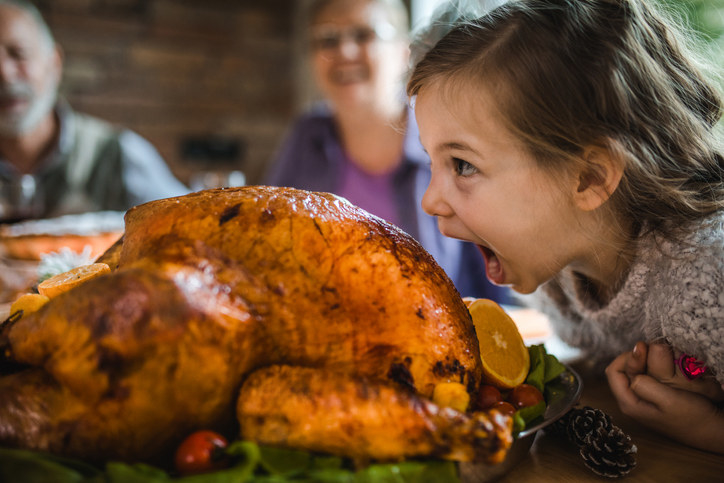So there's a massive salmonella outbreak linked to raw turkey right now, and it's also Thanksgiving.
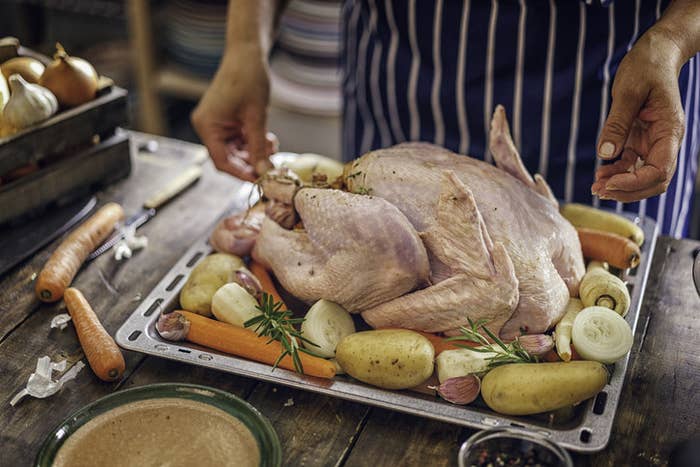
Nobody likes dealing with an unwelcome guest at the Thanksgiving table, especially when that guest is a diarrhea-causing germ lurking in your meal.
In what may seem like the most 2018 turn of events ever, America is in the midst of a multidrug-resistant salmonella outbreak linked to raw turkey products during the one time of year when almost everyone is cooking turkey. The outbreak has sickened 164 people in 35 states so far, leading to 63 hospitalizations and one death in California, according to the Centers for Disease Control and Prevention (CDC).
The outbreak strain of salmonella has been identified in raw turkey products, raw turkey pet food, and live turkeys. People who have gotten sick have reported eating various turkey products (i.e. whole birds, breasts, patties) sold under different brands and purchased from multiple locations — so no single source or supplier has been identified.
Last Week, Wisconsin turkey supplier Jennie-O Turkey Store Sales recalled 91,388 pounds of raw ground turkey products due to possible contamination with salmonella, according to the USDA.
Consumer groups are calling on the USDA to release the names of other slaughterhouses and establishments where a similar strain of salmonella was identified, BuzzFeed News previously reported. But according to food safety experts, federal agencies may be hesitant to issue public warnings right before Thanksgiving — and possibly tank turkey sales — before confirming a direct link to specific producers for this outbreak.
What does that mean for you? It's pretty much impossible to know which brands are safe and which ones to avoid (aside from the recalled Jennie-O products) when buying a turkey — but that doesn't mean you have to skip turkey entirely this year.
You don't have to let salmonella ruin your holiday meal — as long as you take these steps to handle and cook your turkey properly.
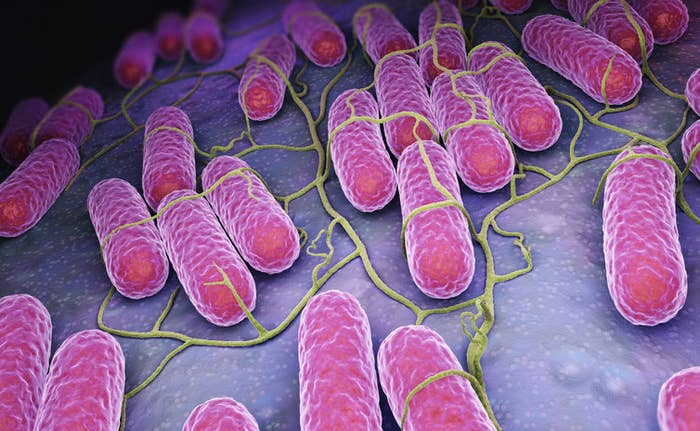
Yes, that's right — you can have your turkey and eat it too (salmonella-free). The CDC is not advising consumers to avoid eating turkey products as long as they are cooked properly, which should kill any germs that can make you sick. Infections with salmonella can cause diarrhea, fever, and cramping and lead to serious complications for people with weaker immune systems.
You and your Thanksgiving guests should be fine as long as you thaw the turkey the right way, handle it safely to avoid cross-contamination, and cook it to a high-enough internal temperature. But it's also easy to make mistakes, especially if you're a rookie chef or it's your first time cooking an entire turkey.
Failing to use proper food safety practices while cooking turkey can allow for the growth or spread of salmonella and other nasty food-borne germs such as Campylobacter, Clostridium perfringens, and Staphylococcus aureus.
So here are some steps you can take to safely cook your turkey so you don't accidentally make you or your guests really sick.
Wash your hands before, during, and after cooking.
Salmonella infections — and other bugs like norovirus — can also spread from one person to another, so always wash your hands before cooking for other people (you don't want to be the cook who gets everyone sick).
You can also cross-contaminate surfaces and foods with germs from your hands when switching between cooking the raw turkey and other dishes. So it's important to wash your hands after you touch raw turkey or its juices (even if you aren't done cooking), and right before you sit down to eat.
One more thing: washing your hands doesn't mean just running them under water for two seconds and wiping them dry on your pants. The proper hand washing technique is to lather your hands with soap and scrub for at least 20 seconds, then rinse and dry them on a clean towel or using an air dryer. (More on proper hand washing here.)

Thaw your frozen turkey the right way — and never leave it sitting out on the counter for hours on end.
Buying a frozen turkey is convenient because you can do it ahead of time, whereas fresh turkey needs to be cooked within two days of purchasing — but you need to thaw a frozen bird before cooking. Thawing a turkey properly will take some time and effort, but it's really important.
First, never thaw your turkey by letting it sit out on your counter at room temperature for hours. Bacteria like salmonella grow the fastest between 40 and 140 degrees Fahrenheit, which is also called the "danger zone" because bacteria can grow to dangerous levels that cause illness.
Use the refrigerator, microwave, or cold water methods instead. These allow the frozen turkey to thaw at a steady, safe temperature — one that's warm enough for it defrost but cold enough to keep bacteria from multiplying rapidly.
If you're thawing it in the fridge, allow 24 hours for every 5 pounds and keep it in a pan to catch any raw juices. When using the microwave, remove all plastic wrapping and use the owner's manual to find out which power level to use and how many minutes it'll need per pound. If you want to use a cold water bath, keep the turkey in for 30 minutes for every pound and change the water every 30 minutes so it thaws evenly. (More on how to safely thaw your turkey here.)
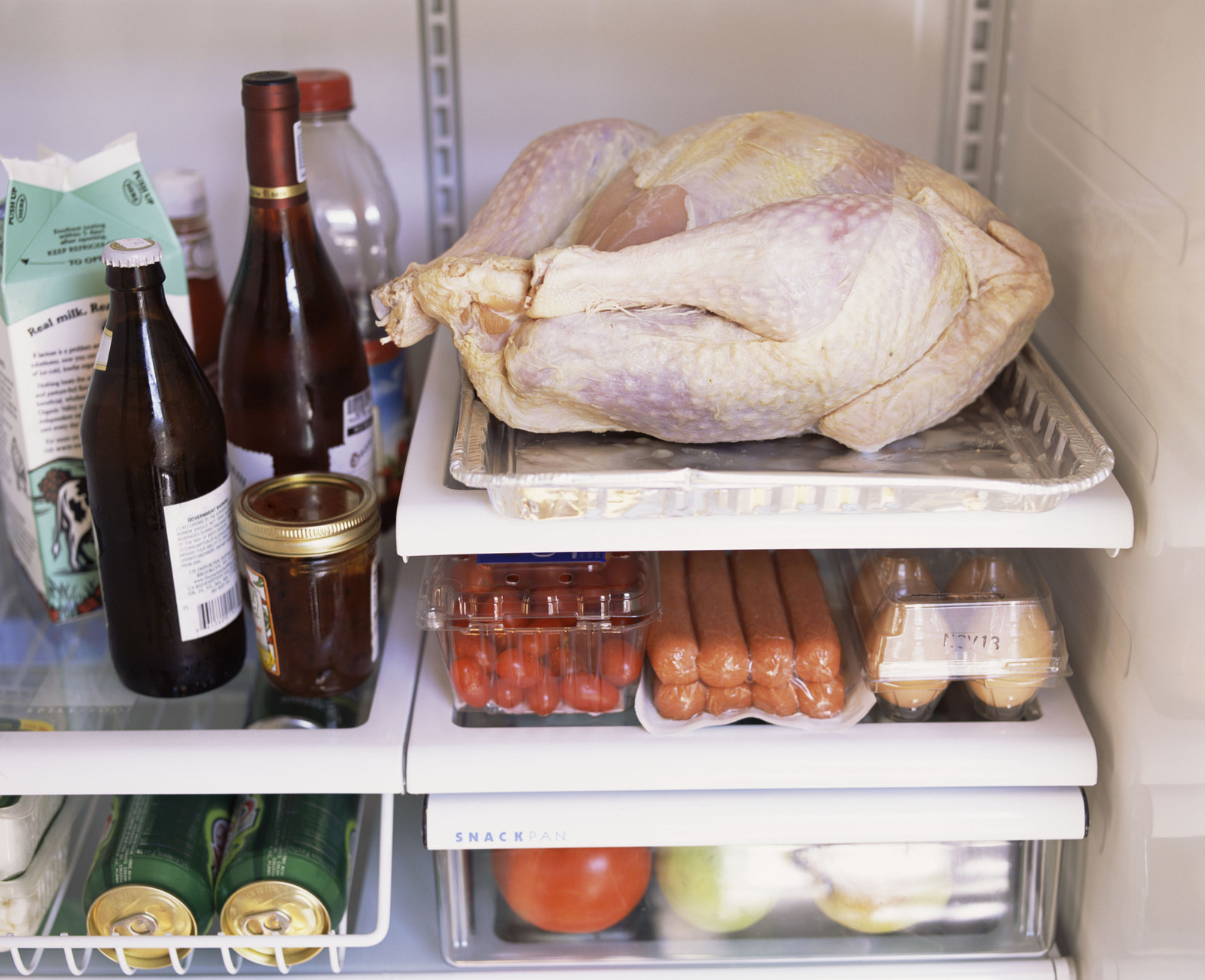
Do not rinse off the turkey in your sink before cooking.
Rinsing off your turkey with water is not only ineffective (it doesn't remove enough germs to make a difference), but it also allows the raw juices to splash all over the sink and surrounding surfaces, BuzzFeed News previously reported. So this actually increases the risk of germs from the raw turkey spreading to other areas or foods, which can make you sick.
Seriously, you do not need to wash raw poultry before cooking.
Keep the raw turkey and anything it touches away from other surfaces and utensils, or foods that won't get cooked, to avoid cross-contamination.
Thanksgiving usually requires cooking several different types of food on one day and presumably in one kitchen, which make it easier for cross-contamination to occur when there's a huge raw turkey involved.
It's important to keep the raw turkey separate from other foods that won't get cooked (like fresh veggies) or foods that are already cooked. The CDC recommends using a separate cutting board for raw turkey. You can also reduce the risk of cross-contamination by thoroughly washing any utensils or plates that come in contact with the raw turkey, and sanitizing your countertop before using it to prep other foods.
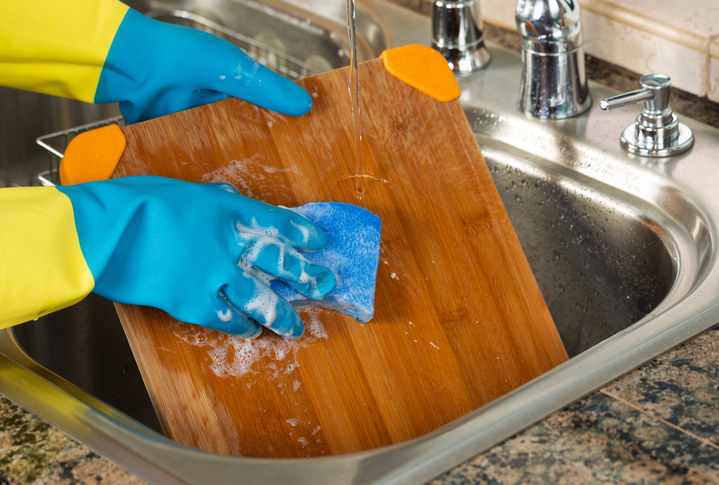
Make sure the entire turkey reaches an internal temperature of 165 degrees Fahrenheit before serving.
When it comes to bacteria like salmonella that spreads through raw or undercooked poultry or eggs, it's really important to make sure you cook turkey properly. This means cooking it at a high-enough temperature and for a long-enough time so germs are killed and it's safe to eat — whether that's in the oven, deep fryer, or smoker.
According to the CDC, this means cooking the turkey until it reaches an internal temperature of 165 degrees Fahrenheit. You can't tell if the turkey has reached this temperature with your eyes, so make sure you have a meat thermometer in your kitchen before you pop the turkey in the oven on Thanksgiving. Even if the turkey looks nice and crispy, certain parts of it could still be undercooked — so it's important to poke the thermometer into the thickest section of the turkey and a few other parts to make sure the whole thing is cooked properly.
